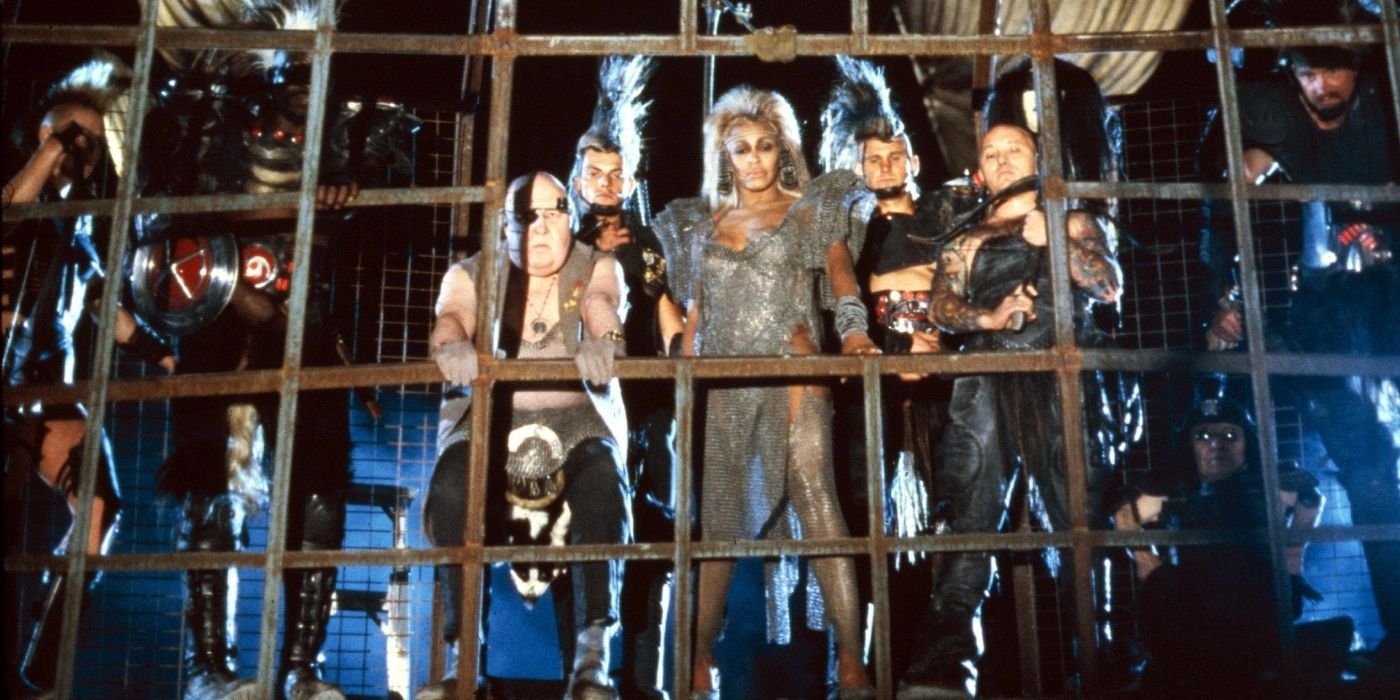The Mad Max movies have changed the story behind its offscreen apocalypse several times, but there is a reason behind this repeated retconning of the series. The Mad Max series began with the futuristic (but, crucially, not post-apocalyptic) revenge thriller Mad Max in 1979. A grounded story of a cop losing his family and seeking bloody vengeance, the original film is almost unrecognizable from its sequels.
This is because an offscreen apocalypse occurs between the original Mad Max and its first sequel The Road Warrior, the cause of which is never made clear. The end of the world is referred to in such vague, noncommittal terms that one fan theory speculates the apocalypse never happened in Mad Max, and the title character’s worldview is merely distorted by unimaginable trauma. However, there is another explanation for why the cause of the world’s end keeps changing between outings.
The original pre-apocalypse Mad Max depicts a post-Peak Oil future as a bleak world, but the specific cause of the apocalypse is inconsistent throughout the franchise. In The Road Warrior, the cause could be nuclear war or water/fuel shortages, judging by the enigmatic opening narration which states that: “two mighty warrior tribes went to war and touched off a blaze which engulfed them all. Without fuel they were nothing.” In Beyond Thunderdome, the end of the world is explicitly the fault of nuclear war, whereas in the later sequel Fury Road, water wars are referenced alongside "thermonuclear skirmish" during the opening’s story setting montage. While the Mad Max franchise timeline is unclear and the apocalypse could have come about via a combination of these factors, the likelihood is the inconsistency is caused by the filmmakers choosing an era-appropriate event for each sequel.
The original Mad Max was a dire warning about the potential social and cultural cost of fossil fuel dependency, and subsequent sequels have taken this idea a step further by depicting numerous apocalypses caused by then-topical issues. This could explain why Beyond Thunderdome blames nuclear war when the sequel was released at the height of the Cold War during the mid-‘80s, and its plot concerns a power struggle between Aunt Entity and Master Blaster wherein the local civilians are powerless pawns. The nuclear apocalypse is reflective of human animosity, and the sequel’s story reaffirms this theme.
In contrast, Fury Road blames water and fuel shortages as these are a more timely concern in the environmentally-conscious 2010s. Much like Bartertown’s warring factions can be seen as despots more concerned with stockpiling weapons than the safety of their citizens, the villains of Fury Road are depicted as shameless hoarders of resources whose greed will eventually cost them their lives. Fury Road’s apocalypse is caused by water shortages for the same reason Beyond Thunderdome’s is caused by nuclear war, just as Aunt Entity’s short-sighted trigger-happiness is akin to Immortan Joe and the War Boy’s lethal greed. The changing causes of the Mad Max franchise’s apocalypses reflect the cultural concerns of their respective eras, be it the green energy-focused present or nuclear-crazy ‘80s.


